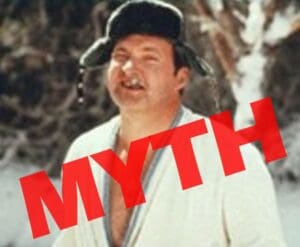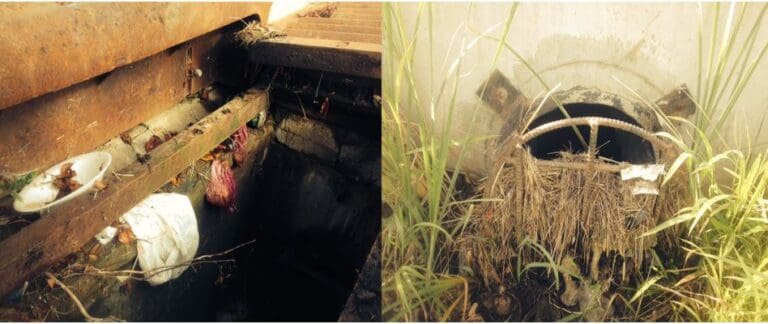What is Storm Water and Where Does it Go?
What comes to mind when you hear the word “storm water”? Perhaps you think of torrential rainfall deluging yards & overwhelming gutters in the springtime. Or maybe you imagine water screaming through large parking lots, making it impossible to avoid puddles as you tiptoe towards the store entrance. And it could be that you visualize the storm drains that line the curb outside of your home (that are often labeled “storm water”)!
These are all accurate representations of storm water – but we find there are many misconceptions as of where this water goes.
Where does this water and the debris it carries end up?



The truth is, anything that enters a storm drain is eventually discharged UNTREATED into a local water body!

If you’re a resident of Lancaster, your storm water eventually spills into the Hocking River and travels southeast until it reaches the Ohio River.
If you’re from Pickerington or Lithopolis, the storm water surrounding you outlets into George, Walnut, Blacklick, or Sycamore Creek. It travels west and soon enters the Scioto River and makes its way down to the Ohio River.
Those of you in the Buckeye Lake watershed, the water entering your storm drains travels north to the Licking River. This travels east to the Muskingum River and then south to the Ohio River.
(If you wish to play the long game, the Ohio River later teams up with the Tennessee River to join the Mississippi and travels south to the Gulf of Mexico!)
These are the very water bodies we use for swimming, recreation, and drinking water. When pollutants enter them, they can destroy aquatic habitats, reduce aesthetic value, and even threaten public health.

Why is this all important? It’s proof that your actions matter. As storm water flows over parking lots, streets, and lawns it transports substances such as automotive waste, lawn chemicals, eroded soil, and just about any other small object in its way. And as we just discussed in our geography refresher, this water, and everything it is carrying, has a long path ahead of it!
What Can You Do At Home?
* Keep chemicals, yard waste, and other materials out of storm drains.
* Check your car and lawn equipment for oil leaks and make repairs as soon as possible.
* Avoid washing your car in your driveway, as this provides detergents a direct path to the storm drain. Instead, use a commercial car wash or wash your vehicle in a grassy area so the ground can filter the water.
* Keep your soil and sediment from moving. Plant ground cover to protect and stabilize areas prone to erosion.
* Choose native plants for your landscapes, as these species need fewer chemical inputs and require less water.
* Cut down on your use of insecticides by providing habitat for pest-eating critters such as birds, bats, and beneficial insects.
* Is it time to drain your swimming pool? Make sure you know whether its contents can be discharged into the the storm sewer.
More Information on preventing storm water pollution can be found by visiting the following links:
Fairfield SWCD Storm Water Pollution Reduction
Pickerington Storm Water Management
Lancaster Storm Water Management
